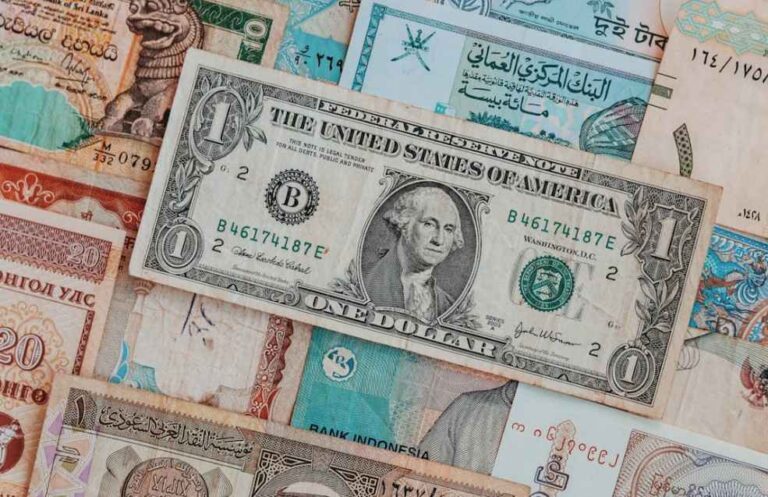The world of currencies is constantly changing, with the value of different currencies fluctuating based on a variety of factors.
As of 2023, the Kuwaiti dinar is considered the most expensive currency in the world. This is due to the country’s significant oil reserves and its status as a major oil-exporting nation. The value of the dinar is closely linked to the price of oil, which has been increasing in recent years.
Other currencies considered expensive include the Swiss franc, the US dollar, the euro and the Australian dollar. These currencies are considered safe havens and are often in demand during times of economic uncertainty.
Table of Contents
The most expensive currencies in 2024
As of 2024, the following currencies are considered the 10 most expensive in the world:
Kuwaiti Dinar
As the highest valued currency in the world, the Kuwaiti dinar is pegged to the US dollar and has a value of 1 KWD = 3.29 USD. The country’s vast oil reserves and status as a major oil-exporting nation contribute to the currency’s high value.
The Kuwaiti dinar is considered the world’s strongest currency in 2023 and is often sought after by investors looking for a safe place to park their money.
Bahraini Dinar
The Bahraini Dinar has a value of 1 BHD = 2.65 USD, making it the second most expensive currency in the world. The country’s strong economy and low inflation rate contribute to the currency’s high value. The Bahraini Dinar is the currency of Bahrain, an island state located in the Persian Gulf.
Omani Rial
The Omani Rial has a value of 1 OMR = 2.60 USD, making it the third most expensive currency in the world. The country’s strong economy and low inflation rate, as well as its status as a major oil-exporting nation, contribute to the currency’s high value.
Jordanian Dinar
The Jordanian dinar has a value of 1 JOD = 1.41 USD, making it the fourth most expensive currency in the world. The country’s strong economy and low inflation rate contribute to the high value of the currency.
British Pound
The British pound is valued at 1 GBP = 1.36 USD, making it the fifth most expensive currency in the world. The country’s strong economy and status as a major financial center contribute to the currency’s high value.
Cayman Islands Dollar
The Cayman Islands dollar has a value of 1 KYD = 1.20 USD. Thus making it the sixth most expensive currency in the world. The Cayman Islands, a British Caribbean territory, are renowned as an offshore financial center. The Cayman Islands dollar, introduced in the 1970s, maintains a fixed exchange rate with the US dollar.
Gibraltar Pound
The Gibraltar Pound has a value of 1 GIP = 1.27 USD, making it the seventh most expensive currency in the world. Located at the southernmost point of Spain, Gibraltar is a British territory that spans just 2.6 square miles. The Gibraltar Pound, first introduced in the 1920s, maintains parity with the British Pound, meaning one GIP is equivalent to one GBP.
Swiss Franc
The Swiss franc is valued at 1 CHF = 1.17 USD. Thus making it the eighth most expensive currency in the world. The Swiss franc, which serves as the official currency of Switzerland and its small neighbor Liechtenstein, is perceived as a safe option due to Switzerland’s political stability.
EUR
The Euro is the official currency of the European Union and is used by many countries in the region. It has a value of 1 EUR = 1.22 USD, making it the sixth most expensive currency in the world.
US Dollar
The US dollar is the world’s main reserve currency and is used in international trade. The US dollar has a value of 1 USD = 1.00 USD, making it the tenth most expensive currency in the world.
It is stated that the US dollar will always be the most traded currency. It is a universal currency supported by the influence of the United States in world politics.
Risks when trading expensive currencies
When trading expensive currencies like the Kuwaiti dinar, Bahraini dinar or Omani rial, there are some key risks to be aware of:
Volatility
These currencies are often subject to wide fluctuations in value, making them riskier to trade than more stable currencies. Volatility can be caused by changes in global economic conditions, political events or natural disasters.
More currency
The Kuwaiti dinar, Bahraini dinar, and Omani rial are pegged to the US dollar. Thus meaning their value is closely tied to the value of the US dollar. This can make them less predictable and more difficult to trade, as fluctuations in the value of the US dollar can have a significant impact on the value of these currencies.
Economic dependence
These currencies are closely linked to the performance of the oil market. Which is subject to fluctuations in supply and demand. If the oil market does poorly, this can have a negative impact on the value of these currencies.
Political instability
These countries pose a greater risk of political instability, as any political event or change can have a significant impact on the value of their currencies.
Lack of liquidity
These currencies are traded less frequently. Which means that market depth and liquidity are not as high as for major currencies, which can make it more difficult to find buyers and sellers and can increase the spread between buying and selling prices sale.












